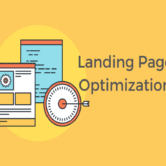
Define audience targeting in the context of content writing
Introduction
Audience targeting in content writing refers to the process of tailoring content to meet the specific needs, interests, behaviors, and preferences of a defined group of readers. Rather than writing for a generic or broad audience, targeted content focuses on a well-researched segment, delivering more relevant, compelling, and effective messaging. It ensures that content resonates with the right people—those most likely to engage, convert, and stay loyal.
Identifying the Ideal Reader
The first step in audience targeting is defining who the content is for. This includes analyzing demographics (age, location, gender), psychographics (values, interests, lifestyle), and behavior patterns. Understanding the ideal reader shapes the tone, format, and messaging of the content.
Creating Detailed Buyer Personas
Writers often create personas to visualize the target audience. These fictional profiles include names, roles, goals, and challenges. Personas help writers empathize with the audience and craft content that speaks directly to their experiences and motivations.
Aligning with User Intent
Targeted content addresses the user’s search or browsing intent—whether informational, navigational, or transactional. Writing that aligns with what the audience is actively looking for increases relevance, trust, and engagement.
Choosing the Right Language and Tone
Audience targeting influences voice and style. A youthful, informal tone might suit a Gen Z audience, while a more professional, authoritative tone fits B2B readers. The right tone builds rapport and enhances reader comfort.
Selecting Relevant Topics and Formats
Targeted content speaks to specific interests and concerns. It also appears in the formats preferred by the audience—blog posts, videos, infographics, guides, or case studies. Matching topic and format ensures higher engagement and satisfaction.
Improving Content Performance Metrics
Well-targeted content typically leads to higher click-through rates, longer session durations, and better conversion metrics. It reduces bounce rates because the content meets reader expectations from the outset.
Personalizing Content for Segments
Advanced audience targeting allows for content personalization, tailoring messages for sub-segments based on their behaviors, preferences, or lifecycle stage. Personalized content deepens relevance and increases loyalty.
Driving Strategic Marketing Outcomes
Audience targeting ensures that content supports broader marketing goals—such as attracting qualified leads, improving retention, or nurturing specific buyer stages—by speaking to the right people at the right time with the right message.
Conclusion
Audience targeting is essential for effective content writing. It transforms generic messaging into precise communication that resonates, persuades, and converts. By understanding and writing specifically for a defined audience, content creators increase impact, build stronger relationships, and deliver more meaningful digital experiences.
Hashtags
#audiencetargeting #contentwriting #contentstrategy #buyerpersonas #digitalmarketing #targetedcontent #contentpersonalization #userintent #idealreader #customcontent #webwriting #marketingstrategy #readersfirst #engagingcontent #contentplanning #writingforweb #brandvoice #userengagement #copywritingtips #contentsegmentation #conversioncopywriting #relevantcontent #contentcreation #knowtheaudience #effectivewriting





